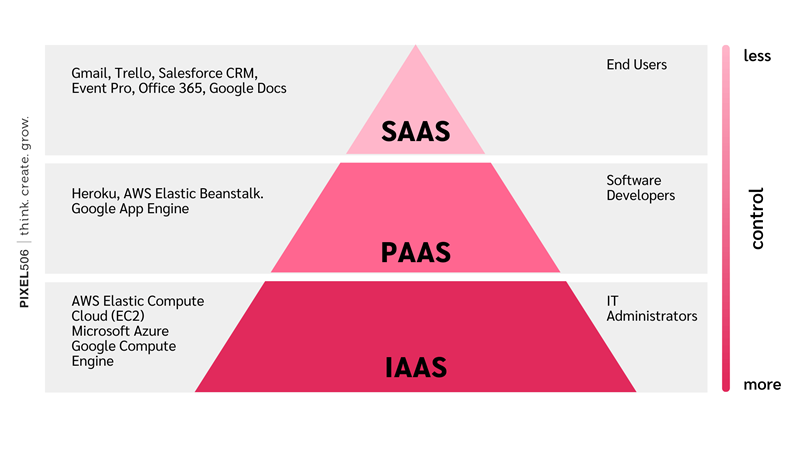
Table of Contents
Top 4 Benefits of Nearshore Outsourcing for SaaS Companies
SaaS companies understand the constant need to improve software. Their software designers and engineers must continuously focus on upgrading and innovating to stay ahead of the competition and meet the growing demands of customers. Nearshore outsourcing can help keep up with that demand.
What is Nearshore Outsourcing?
Nearshoring is the practice of outsourcing business processes to another company in a nearby country in order to save time and money while maintaining a high level of quality. It is a time-efficient, cost-effective, and reliable solution for companies that want to focus on their core business and do not have the time or resources to keep everything in-house. In recent years, many companies in the United States have relocated their offshoring activities from India or the Philippines to professional nearshore companies in Costa Rica, Perú, Nicaragua, and other Latin American countries.
What is SaaS?
SaaS stands for ‘software as a service,’ and is a software licensing and delivery model in which software is licensed on a subscription basis and is centrally hosted. With SaaS, also known as “on-demand software”, you access software through the Internet rather than installing and maintaining it.
Some examples of SaaS include Mailchimp, Slack, and Hubspot. Even online email services, such as Gmail, are an example of SaaS. When you use Gmail, you do not host your own email server. Google is hosting the email server, and you access it through your browser as a client. Another example of a SaaS company is Netflix. This online television and video streaming service sells software to watch licensed videos on demand. As a customer, you simply choose a subscription plan and pay a fixed fee.
SaaS vs PaaS vs IaaS
In addition to SaaS (Software as a Service), you may have also heard about PaaS (Platforms as a Service) and IaaS (Infrastructure as a Service.) Although this blog focuses on the benefits of nearshoring for SaaS companies, we will briefly explain the differences between these three types of cloud computing services.
SaaS
We already established that SaaS is used as an online application, meaning you don't need to install or maintain any kind of software. SaaS is software that’s available via a third-party over the internet and is used by customers in a form of service that enables software to be carried on the Internet. Some examples of SaaS include Gmail, Office 365, and Google Docs.
PaaS
PaaS stands for Platforms as a Service and includes hardware and software tools that are available over the internet. PaaS is used mostly by software developers as it offers an operating system for application development and testing without caring about the infrastructure. Some examples of PaaS include Heroku, AWS Elastic Beanstalk, Microsoft Azure, and Google Cloud Platform.
IaaS
IaaS stands for Infrastructure as a Service, and includes cloud-based services and pay-as-you-go services such as storage, networking, and virtualization. IaaS is used mostly by IT administrators. Some examples of IaaS include AWS Elastic Compute Cloud, Microsoft Azure, and Google Compute Engine.

Managed Services vs SaaS
SaaS applications can be useful in many situations, but they do have their limitations. There is little room for customization since SaaS applications are a one-size-fits-all solution. If your business is looking for custom options, managed services might be a better choice.
Managed services go a step further than SaaS, and often offer additional support by taking care of both networking and hardware requirements. Managed services providers specialize in managing IT infrastructure and end-user systems, they ensure operations are running without interruption.
In short, SaaS only outsources the software but not the processes. With managed services, you hand off tasks to an external partner so you have more time to focus on your core business.
4 Benefits of Nearshoring for SaaS Companies
In today’s fast-paced world, SaaS companies need to continuously focus on upgrading and innovating software to stay ahead of competitors and meet the growing demands of customers. They will benefit from outsourcing business processes to nearby countries for a multitude of reasons.
-
Access to Talent
Nearshoring can help your business gain access to a vast, experienced talent pool that you otherwise would have missed out on. Latin America has a highly-educated, skilled, and bilingual workforce. You will save time on the hiring process, and beyond. Once you’ve found a trusted nearshore partner, you can easily scale your development team up or down.
-
Saving Costs
One of the main reasons for businesses to offshore is saving costs, and the same goes for nearshoring. Although nearshoring used to be more expensive than offshoring, these days prices are similar. Nearshoring is definitely more cost-effective than onshoring. It does not only help you to save money, nearshoring can save you time and energy as well.
-
Real-Time Collaboration
When your outsourcing partner is located in a nearby country, your internal and external teams will be working in the same or similar time zone. Whereas external teams in Asia or Europe might lead to miscommunication or delay in response, nearshoring enables real-time collaboration and enriches your software development processes.
-
Data Security
Naturally, you require a trustworthy and reliable partner. You want your software and other intellectual property to be yours, and your confidential data to be secured and protected at all times. International laws can be challenging and confusing. Staying within the same (or similar) legal, tax, and accounting systems offers protection for both parties.
These are only four examples, but there are more benefits to nearshore outsourcing.
Key Takeaways
- SaaS companies must continuously focus on upgrading and innovating to stay ahead of the competition and meet the growing demands of customers.
- Nearshoring is the practice of outsourcing business processes to a company in a nearby country in order to save time and money without compromising quality.
- SaaS stands for ‘software as a service,’ and is a software licensing and delivery model in which software is licensed on a subscription basis and is centrally hosted.
- SaaS companies benefit from nearshoring because it gives them access to talent, helps to save costs, allows for real-time collaboration, and protects their data.
About Pixel506
Pixel506 is a nearshore americas agency that helps companies with creative solutions, strategies services, technology services, and digital marketing support. Founded in 2009, we are a highly experienced digital marketing agency that invests heavily in developing and maintaining strong client relationships. Although most of our team members are located in South America, we are a New York-born company with a strong client base in North America. Are you looking for SaaS consulting services or support? As an expert in the field, Pixel506 is happy to assist you. We work closely with our clients to ensure that we offer customized solutions and deliver high-quality, insightful, and actionable results. Let’s chat about your vision and make it happen.
Related Resources:
- How to Hire a Great Nearshore Development Team
- 8 Reasons to Consider Nearshore Software Outsourcing
- 4 Successful Nearshoring Partnerships
- Top 5 Reasons to Choose Costa Rica for Nearshore Development
- “Find a Nearshore Partner with the Right Cultural Fit” Interview
- “Why the tech industry is addicted to Nearshoring?
- “What is nearshore development? The complete guide
- “What Is Nearshore Development, and What to Look For in a Partnership
